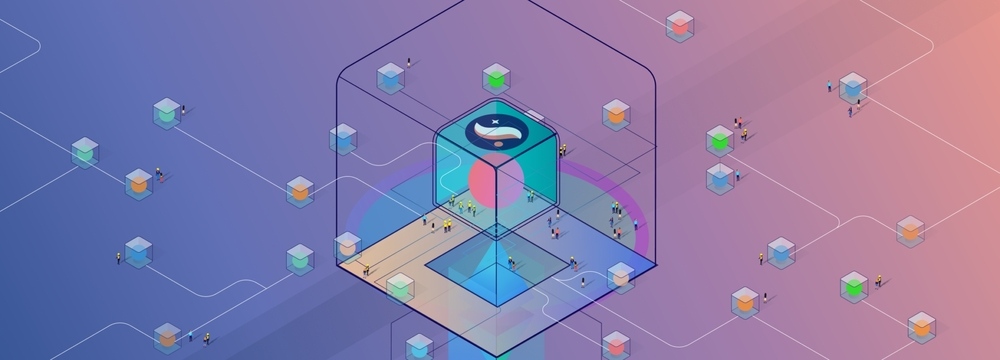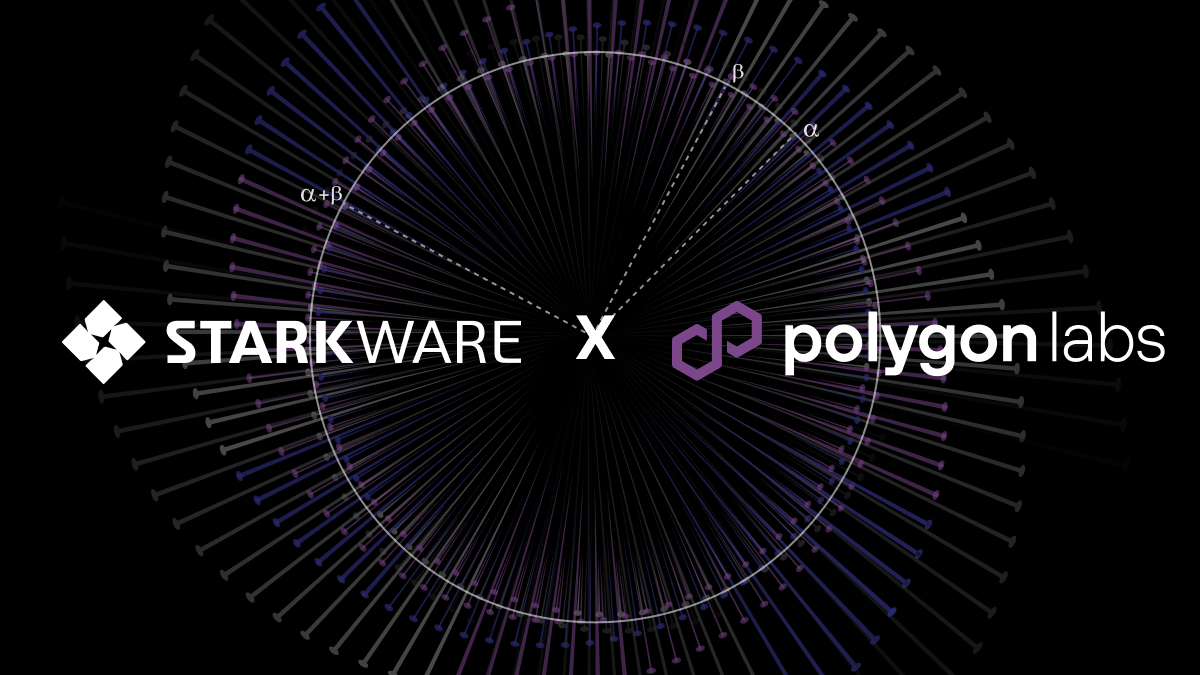Blockchain scalability has always been a heated topic. Nearly every blockchain network touts high numbers of transactions per second (TPS) as a selling point. However, TPS is not a valid metric to compare blockchain networks, making it a challenge to evaluate their relative performance. Moreover, big TPS numbers usually come at a cost — which poses the question: do these networks actually scale, or do they only increase their throughput?
So, let’s examine how to define scalability, which tradeoffs are made to achieve it, and why Validity Rollups are the ultimate blockchain scalability solution.
Not all Transactions are Made Equal
First, we need to establish our assertion that the simple and convenient metric of TPS is not an accurate measure of scalability.
To compensate nodes for executing transactions (and to deter users from spamming the network with unnecessary computation), blockchains charge a fee proportional to the computational burden imposed on the blockchain. In Ethereum, the complexity of the computational burden is measured in gas. Because gas is a very convenient measure of transaction complexity, the term will be used throughout this article for non-Ethereum blockchains as well, even though it is typically Ethereum-specific.
Transactions differ significantly in complexity and, therefore, how much gas they consume. Bitcoin, the pioneer of trustless peer-to-peer transactions, only supports the rudimentary Bitcoin script. These simple transfers from address to address use little gas. In contrast, smart contract chains like Ethereum or Solana support a virtual machine and Turing-complete programming languages that allow for much more complex transactions. Hence, dApps like Uniswap require much more gas.
This is why it makes no sense to compare the TPS of different blockchains. What we should compare instead is the capacity for computation — or throughput.
All Blockchains have a (variable) block size and block time that determine how many units of computation can be processed per block and how fast a new block may be added. Together, these two variables determine the throughput of a blockchain.
What Constrains Blockchain Scalability?
Blockchains strive to be maximally decentralized, inclusive networks. To achieve this, two fundamental properties must be kept in check.
1. Hardware Requirements
The decentralization of a blockchain network is determined by the ability of the weakest node in the network to verify the blockchain and hold its state. Therefore, the costs to run a node (hardware, bandwidth, and storage) should be kept as low as possible to enable as many individuals as possible to become permissionless participants in the trustless network.
2. State Growth
State growth refers to how quickly the blockchain grows. The more throughput a blockchain allows to happen per unit of time, the quicker the blockchain grows. Full nodes store the network’s history, and they must be able to validate the state of the network. Ethereum’s state is stored and referenced using efficient structures such as trees. As the state grows, new leaves and branches are added to it, making it ever more complex and time-consuming to perform certain actions. As the chain grows in size, it worsens the worst-case execution by nodes, which leads to an ever-growing time to validate new blocks. Over time, this also increases the total time it takes for a full node to sync.
Detrimental Impacts of Increasing Throughput
1. Node Count
The minimum requirements to run a node and node counts are:
- Bitcoin¹: 350GB HDD disk space, 5 Mbit/s connection, 1GB RAM, CPU >1 Ghz. Number of nodes: ~10,000
- Ethereum²: 500GB+ SSD disk space, 25 Mbit/s connection, 4–8GB RAM, CPU 2–4 cores. Number of nodes: ~6,000
- Solana³: 1.5TB+ SSD disk space, 300 Mbit/s connection, 128GB RAM CPU 12+ cores. Number of nodes: ~1,200
Notice that the bigger the CPU, bandwidth, and storage requirements for nodes required for throughput of a blockchain, the fewer nodes on the network — leading to weaker decentralization and a less inclusive network.
2. Time to Sync a Full Node
When running a node for the first time, it has to sync to all existing nodes, download, and validate, the state of the network all the way from the genesis block to the tip of the chain. This process should be as fast and efficient as possible to allow anyone to act as a permissionless participant of the protocol.
Taking Jameson Lopp’s 2020 Bitcoin Node and 2021 Node Sync Tests as an indicator, Table 1 compares the time it takes to sync a full node of Bitcoin vs. Ethereum vs. Solana on an average consumer-grade PC.

Table 1 demonstrates that increasing throughput leads to longer sync times because more and more data needs to be processed and stored.
While improvements to node software are constantly made to mitigate the challenge of the growing blockchain (lowering the disk footprint, faster sync speeds, stronger crash resilience, modularization of certain components, etc.), the nodes evidently still can’t keep pace with increases to throughput.
How Should Blockchain Scalability be defined?
Scalability is the most misrepresented term in the blockchain space. While increasing throughput is desirable, it is only one part of the puzzle.
Scalability means more transactions for the same hardware.
For that reason, scalability can be separated into two categories.
Sequencer scalability
Sequencing describes the act of ordering and processing transactions in a network. As previously established, any blockchain could trivially increase its throughput by raising the block size and shortening its block time — up until a point at which the negative impact to its decentralization is deemed too significant. But, tweaking these simple parameters does not provide the required improvements. Ethereum’s EVM can, in theory, handle up to ~2,000 TPS, which is insufficient to service long-term block space demand. To scale sequencing, Solana made some impressive innovations: taking advantage of a parallelizable execution environment and a clever consensus mechanism, which allows for far more efficient throughput. But, despite its improvements, it is neither sufficient nor scalable. As Solana increases its throughput, the hardware costs to run a node and process transactions also increase.
Verification scalability
Verification scalability describes approaches that increase throughput without burdening nodes with ever-increasing hardware costs. Specifically, it refers to cryptographic innovations like Validity proofs. They are the reason why Validity Rollups can scale a blockchain sustainably.
What’s a Validity Rollup?
Validity Rollups (also known as “ZK-Rollups”) move computation and state storage off-chain but keep a small amount of certain data on-chain. A smart contract on the underlying blockchain maintains the state root of the Rollup. On the Rollup, a batch of highly-compressed transactions, together with the current state root, are sent to an off-chain Prover. The Prover computes the transactions, generates a validity proof of the results and the new state root, and sends it to an on-chain Verifier. The Verifier verifies the validity proof, and the smart contract that maintains the state of the Rollup updates it to the new state provided by the Prover.
How do Validity Rollups scale with the same hardware requirements?
Even though Provers do require high-end hardware, they do not impact the decentralization of a blockchain; because the validity of transactions is guaranteed by mathematically-verifiable proofs.
What matters are the requirements to verify the proofs. Because the data involved is highly compressed and largely abstracted away through computation, its impact on nodes of the underlying blockchain is minimal.
Verifiers (Ethereum nodes) do not require high-end hardware, and the size of the batches does not increase hardware requirements. Only state transitions and a small amount of call data need to be processed and stored by the nodes. This allows all Ethereum nodes to verify Validity Rollup batches using their existing hardware.
The more transactions, the cheaper it gets
In traditional blockchains, the more transactions happen, the more expensive it gets for everyone as the block space gets filled up — and users need to outbid each other in a fee market to get their transactions included.
For a Validity Rollup, this dynamic is reversed. Verifying a batch of transactions on Ethereum has a certain cost. As the number of transactions inside a batch grows, the cost to verify the batch grows at an exponentially slower rate. Adding more transactions to a batch leads to cheaper transaction fees even though the batch verification cost increases — because it is amortized among all transactions inside the batch. Validity Rollups want as many transactions as possible inside a batch — so that the verification fee can be shared among all users. As batch size grows to infinity, amortized fee per transaction converges to zero, i.e., the more transactions on a Validity Rollup, the cheaper it gets for everyone.
dYdX, a dApp powered by a Validity Rollup, frequently sees batch sizes of over 12,000 transactions. Comparing the gas consumption of the same transactions on Mainnet vs. on a Validity Rollup illustrates the scalability gains:
Settling a dYdX transaction on Ethereum Mainnet: 200,000 gas
Settling a dYdX transaction on StarkEx: <500 gas
Another way to look at it: Validity Rollups’ main cost scales linearly with the number of users within the same batch.
Why Optimistic Rollups are not as scalable as one may think
In theory, Optimistic Rollups provide nearly the same scalability benefits as Validity Rollups. But there is one important distinction: Optimistic Rollups optimize for the average case, whereas Validity Rollups optimize for the worst case. Because blockchain systems operate in extremely adversarial conditions, optimizing for the worst case is the only way to achieve security.
In the Optimistic Rollup’s worst case, a user’s transactions won’t be checked by fraud checkers. So, to contest fraud, the user has to sync an Ethereum full node, an L2 full node, and compute the suspicious transaction themself.
In the Validity Rollup’s worst case, a user would only need to sync an Ethereum full node to verify the validity proof, saving themself the computational burden.
As opposed to Validity Rollups, Optimistic Rollups’ cost scales linearly with the number of transactions instead of number of users, making them more expensive.
Final Piece of the Puzzle — Permissionless Access to the Rollup State
To guarantee the validity of transactions, users need to run an Ethereum node only. However, users and developers may want to view, and run, the state and execution of the Rollup for various purposes. An indexing L2 node fills this need perfectly. Not only does it allow users to see the transactions in the network, but it is also a critical piece of infrastructure that is necessary for ecosystem infrastructure to function. Indexers like The Graph, Alchemy, Infura; Oracle networks like Chainlink, and block explorers, all of these are fully supported by a permissionless, indexing L2 node.
Conclusion
Many approaches to tackle blockchain scalability falsely focus on increasing throughput. But, this neglects throughputs’ impact on nodes: the ever-increasing hardware requirements to process blocks and store network history and how that inhibits the decentralization of a network.
With the advent of Validity-proof cryptography, a blockchain can achieve true scalability that doesn’t burden nodes with ever-increasing costs and allows for wide decentralization. More transactions with powerful and more complex computations for the same hardware are now possible, inverting the fee market dilemma in the process — the more activity on a Validity Rollup, the cheaper it gets!
¹ From https://bitcoin.org/en/bitcoin-core/features/requirements
² From https://ethereum.org/en/developers/docs/nodes-and-clients/
³ From https://docs.solana.com/running-validator/validator-reqs
⁴ Strongly simplified and adjusted for average dynamic block sizes



